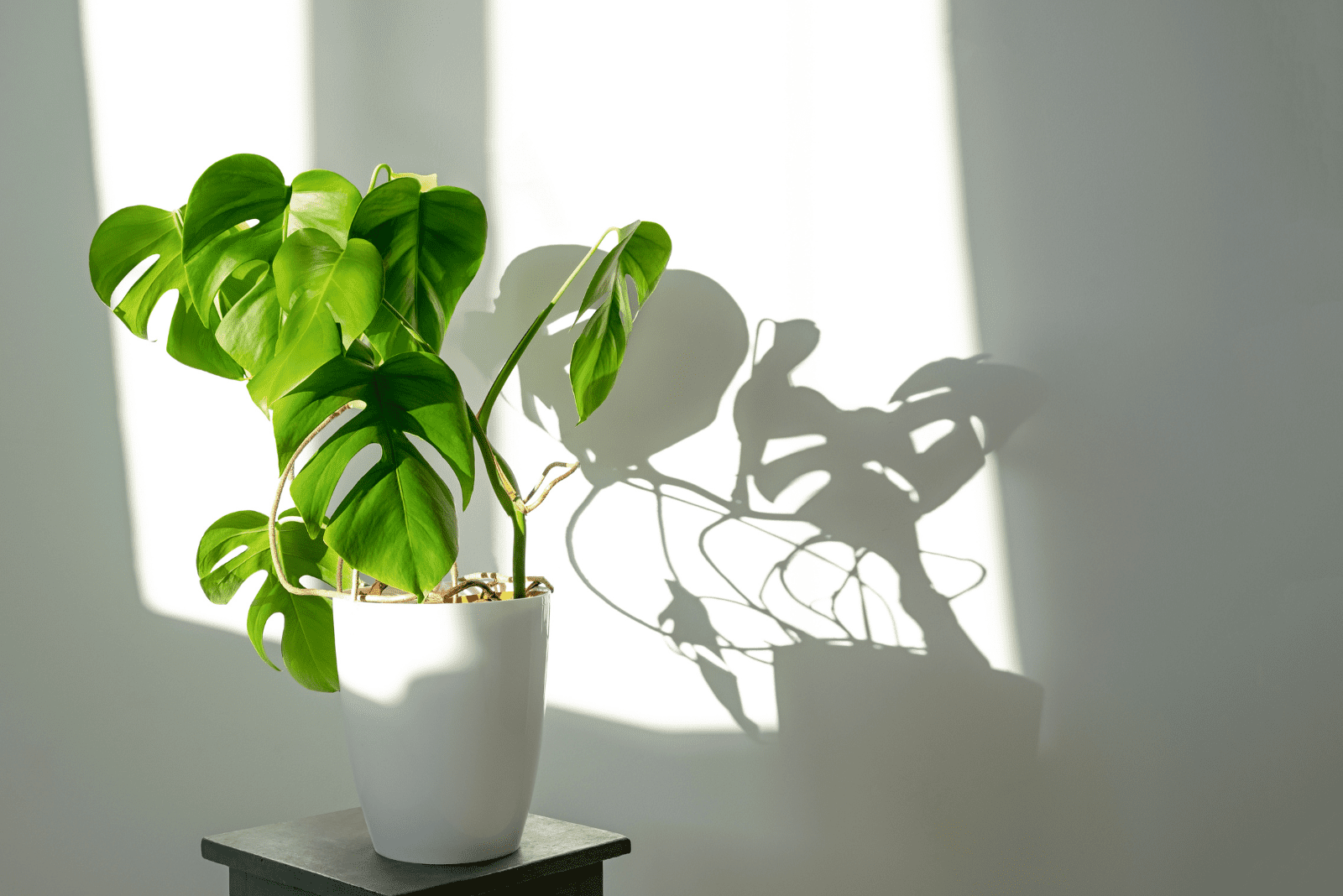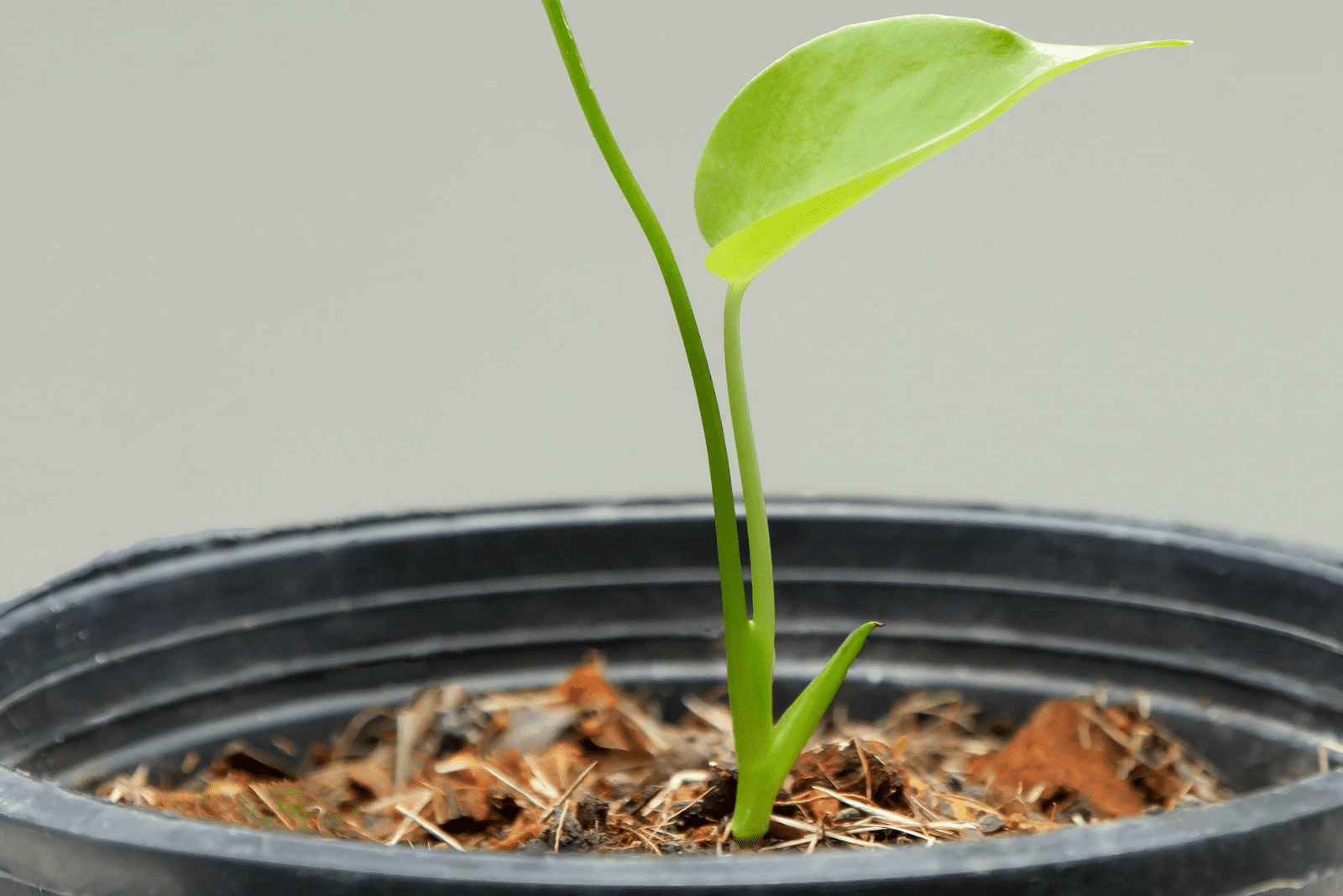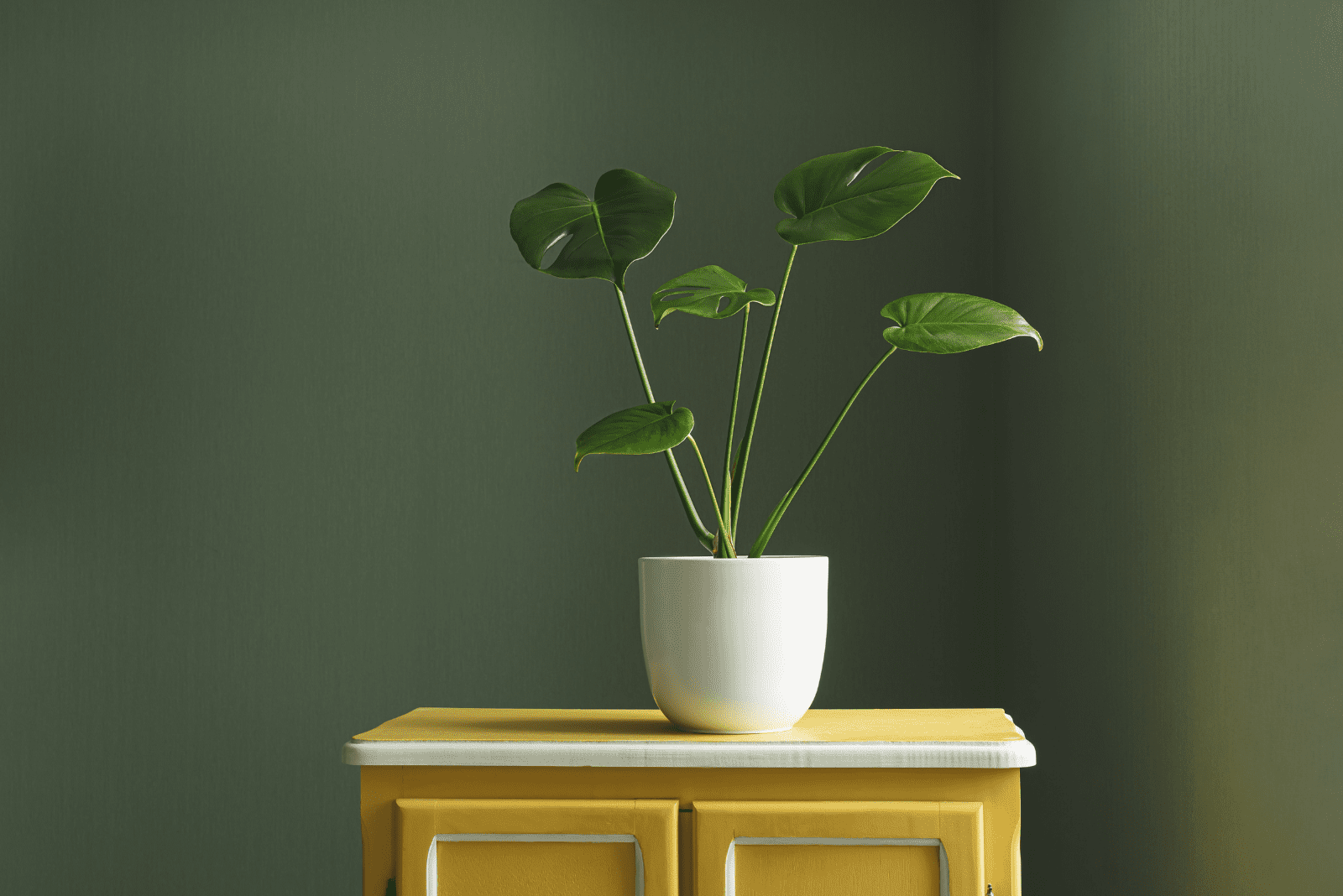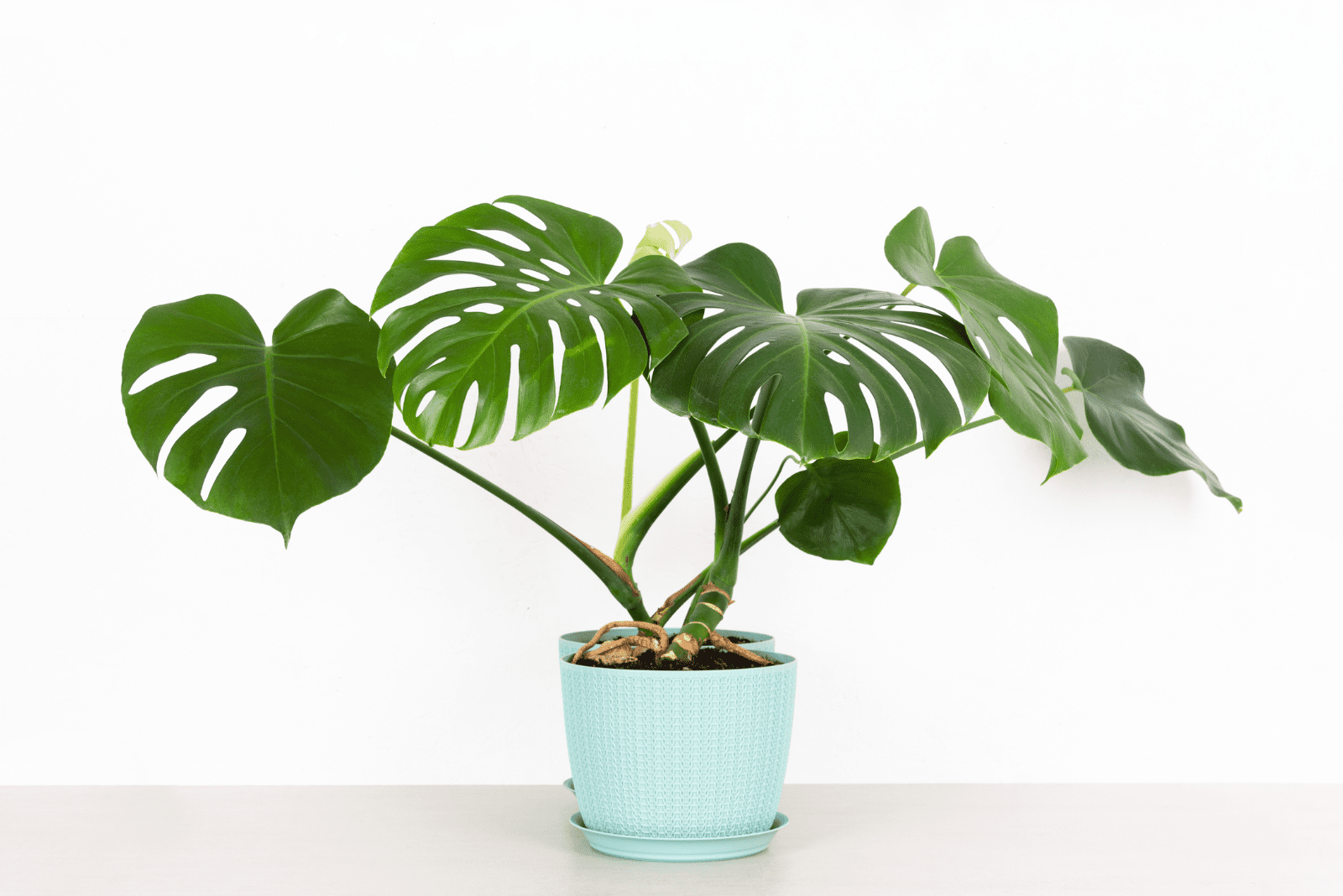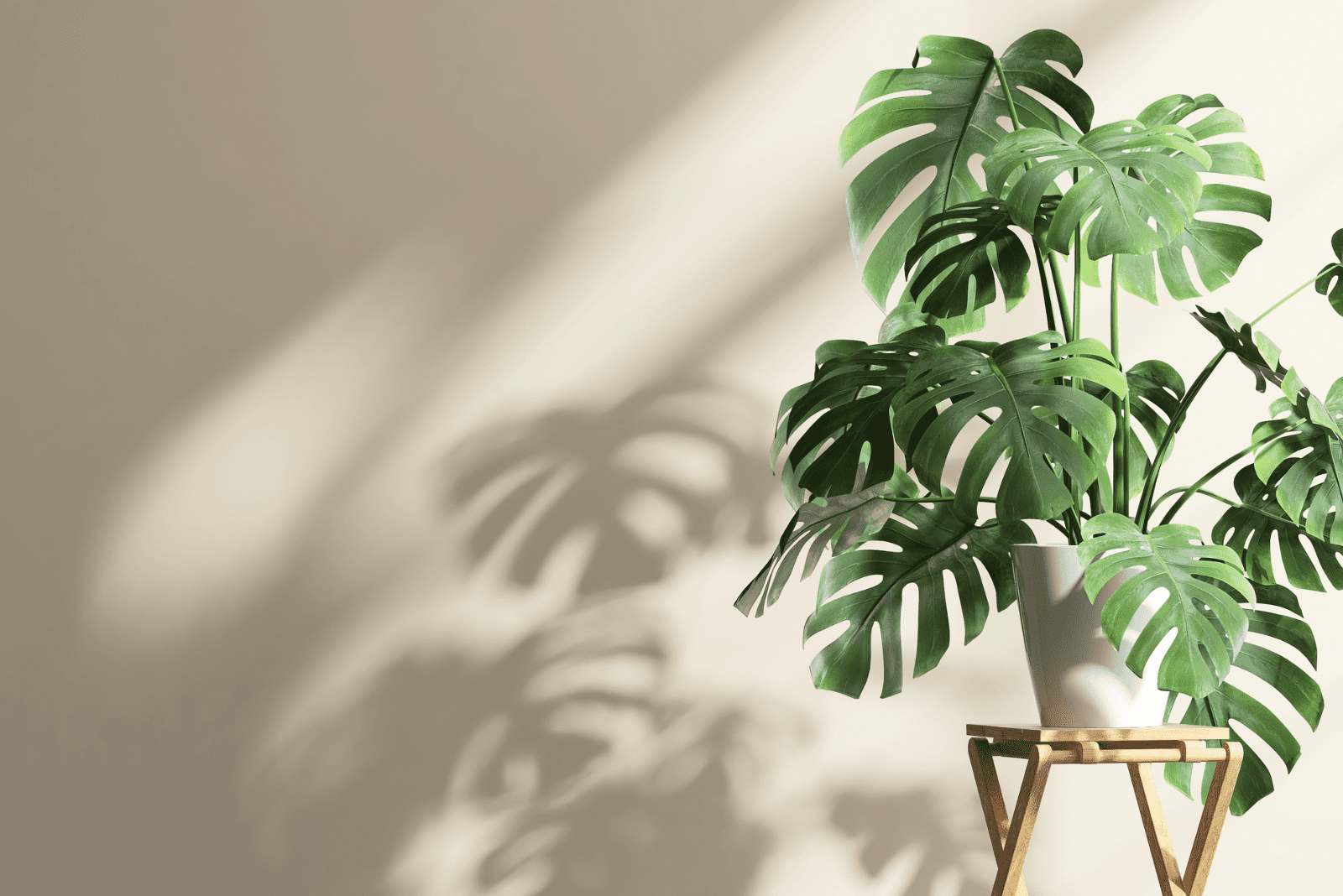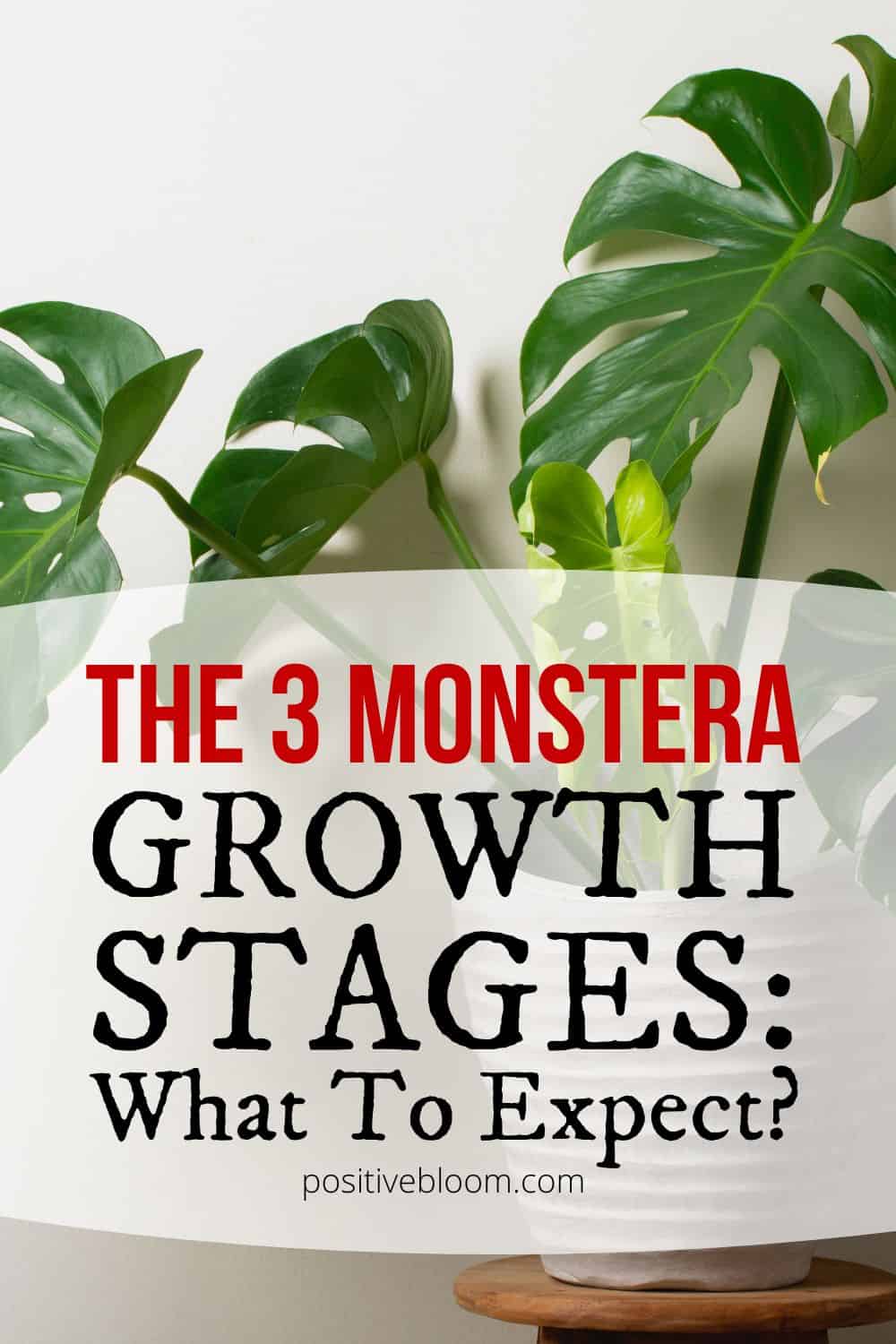One of the distinctive features of Monstera plants is their fast growth rate, which can make it hard to tell if it’s fully mature or will grow more in the future.
In this article, I’ll take you through all the Monstera growth stages, and discuss the characteristics of each stage in detail so that you know what to expect from your Monstera.
You need to pay attention to the conditions you must ensure for each stage so that your Monstera grows as fast as possible.
Let’s get started!
Monstera Growth Stages
Your Monstera will go through three growth stages during its life cycle: seedling, juvenile, and adult.
Let’s find out more about each stage!
Growth Stage 1: Seedling (Baby Monstera)
The initial stage of Monstera growth is the seedling stage. During this stage, the Monstera still needs the seeds as they serve as nutrient and water sources.
The Swiss cheese plant is still weak and doesn’t have the strength to climb, but instead grows on the ground as a creeping plant.
The first plant’s leaves to appear will be the cotyledons, also known as seed leaves. These usually fall off after a few weeks when the plant’s actual leaves start to emerge.
Interestingly, some Monstera varieties tend to grow toward the darkness. This is scientifically called negative phototropism, and it indicates that your plant is hunting for support like a neighboring branch or tree trunk.
Another characteristic of this growth stage is that Monstera nodes produce roots. These roots don’t live long and are pretty thin, typically up to 8 inches.
A runner or stolon is a thin stem that spreads out along the surface of the soil and sprouts new roots at its nodes. This makes it possible for some Monstera plants, such as Monstera acuminata, to grow swiftly, which is advantageous for growing new plants (propagation).
Some Monstera varieties, such as Monstera adansonii and Philodendron Monstera, don’t grow stolons but produce larger leaves and stems.
Growth Stage 2: Juvenile
The Monstera plant begins to mature and develop its first set of leaves during the second stage of growth. This stage lasts from two to eight years depending on the variety.
For the majority of species, this second phase normally starts three months after germination. When it comes to leaf color, shape, and size, it mainly depends on the species you grow; your young Monstera may have heart-shaped leaves at this point.
Your Monstera will form aerial roots during the juvenile growth stage.
These roots grow out of the Monstera stem as opposed to typical roots, which develop in the soil.
These aerial roots aid Monsteras in uptaking the water and nutrients the plant requires to flourish.
Swiss cheese plant leaves start off vibrant green before gradually turning darker. Your Monstera should produce a lot of new leaves during this period. You’ll also notice the first fenestrations in Monstera leaves. These fenestrations will help the Monstera’s lower leaves to get some light.
How often does a Monstera grow new leaves? A healthy Swiss cheese plant develops a new leaf every 4 to 6 years.
Give your young Monstera something to climb on to promote growth.
Growth Stage 3: Mature Plant
When a Monstera reaches the adult stage, it begins to produce mature leaves, blooms, and fruits. This might take anywhere between a year and a half to eight years depending on the variety.
The flowers will bear fruit in the Monstera’s natural environment or in a well-controlled indoor growth environment.
The seeds produced by these Monstera fruits can be utilized to grow new Swiss cheese plants. An adult Monstera, aka Split-leaf Philodendron, produces green fruit with a white, meaty center. They resemble bananas in size and shape, and when the fruit fully mature, they are edible (they are toxic when unripe).
It’s worth mentioning that the flowers and fruits aren’t essential for the Monstera’s life. Still, they are signs that your mature Monstera is perfectly healthy and happy.
FAQs
What can I do to increase the speed of my Monstera’s growth?
You can promote new growth by meeting all your Monstera deliciosa’s requirements. You’ll need to ensure enough humidity, enough light (indirect light), a porous and well-draining potting mix, and enough water and food. Your Monstera will also need repotting if it becomes rootbound.
What do Monstera plants need to grow?
Here are some care tips for Monstera plants. Monsteras are tropical plants, and when they are grown as houseplants they need a lot of indirect sunlight (direct sunlight may cause leaf scorch). Lack of light may cause variegated Monsteras to lose variegations, so use grow lights to prevent low light issues. You’ll also need to ensure high humidity by using a humidifier (available on Amazon).
Watering is another essential part of Monstera plant care. Excess water in the soil may affect the root system and cause root rot. If you have overwatered your Monstera, you’ll notice the leaves are turning yellow. The green leaves will start wilting and drooping if you underwater your Monstera.
You can prevent overwatering and underwatering by waiting until the top two inches of the soil dry out before watering your Monstera.
You can promote plant growth by training your Monstera to climb, i.e., by attaching it to a moss pole.
Wrapping Up
Monsteras are native to rainforests, so you’ll have everything you need to keep your plant healthy if you imitate similar conditions.
There are three Monstera growth stages, and each stage has distinct characteristics. It may take a while until your magnificent Monstera deliciosa develops unique, fenestrated leaves. Still, if you provide it with adequate conditions, you can speed things up.
It’s no wonder Monsteras are such popular plants; just look at their beautiful and large leaves!
Being a Monstera plant parent is one of the best things in the world, just make sure you follow a good care guide.
Until next time!
Like this post? Share or pin it for later!

